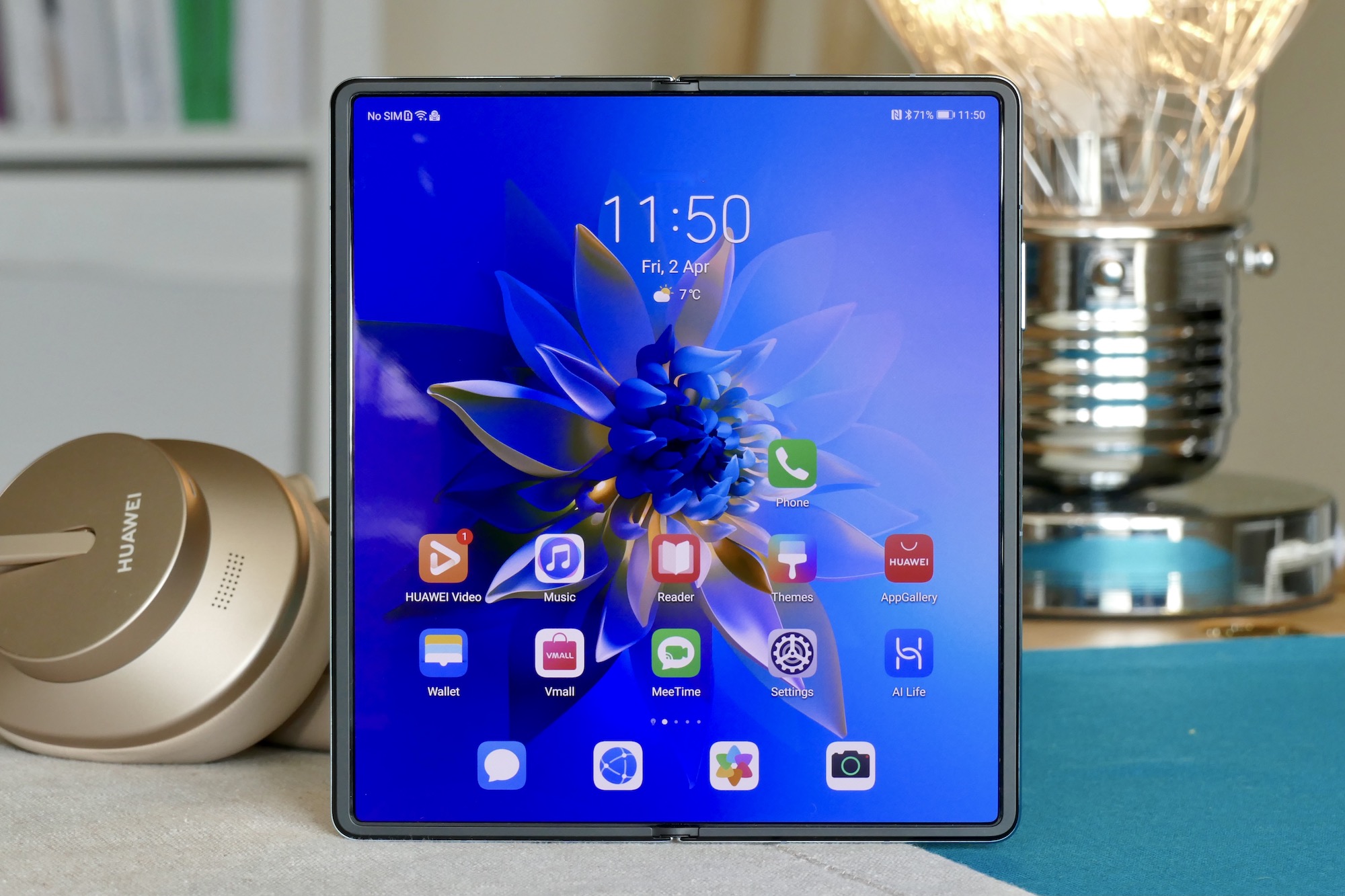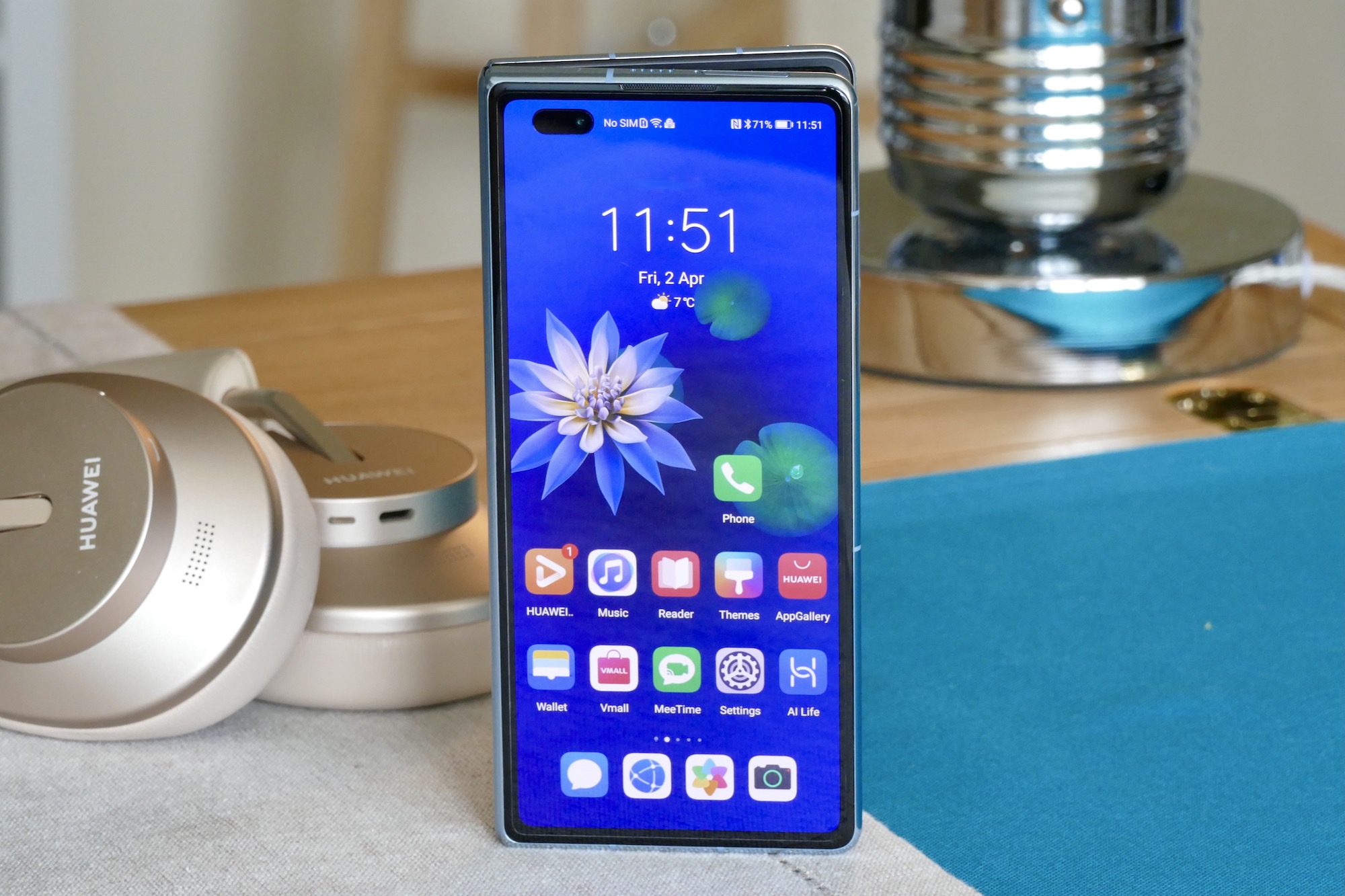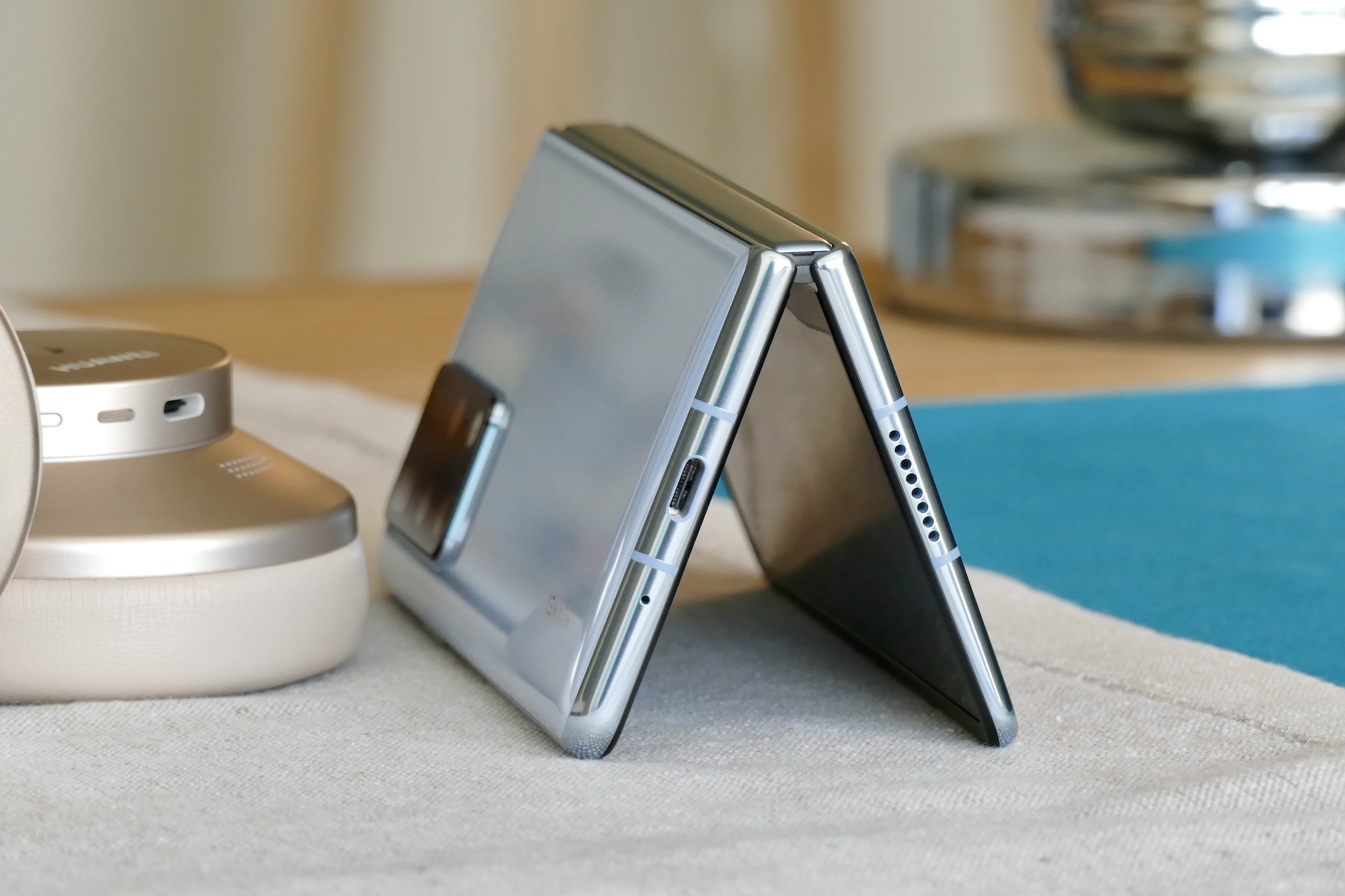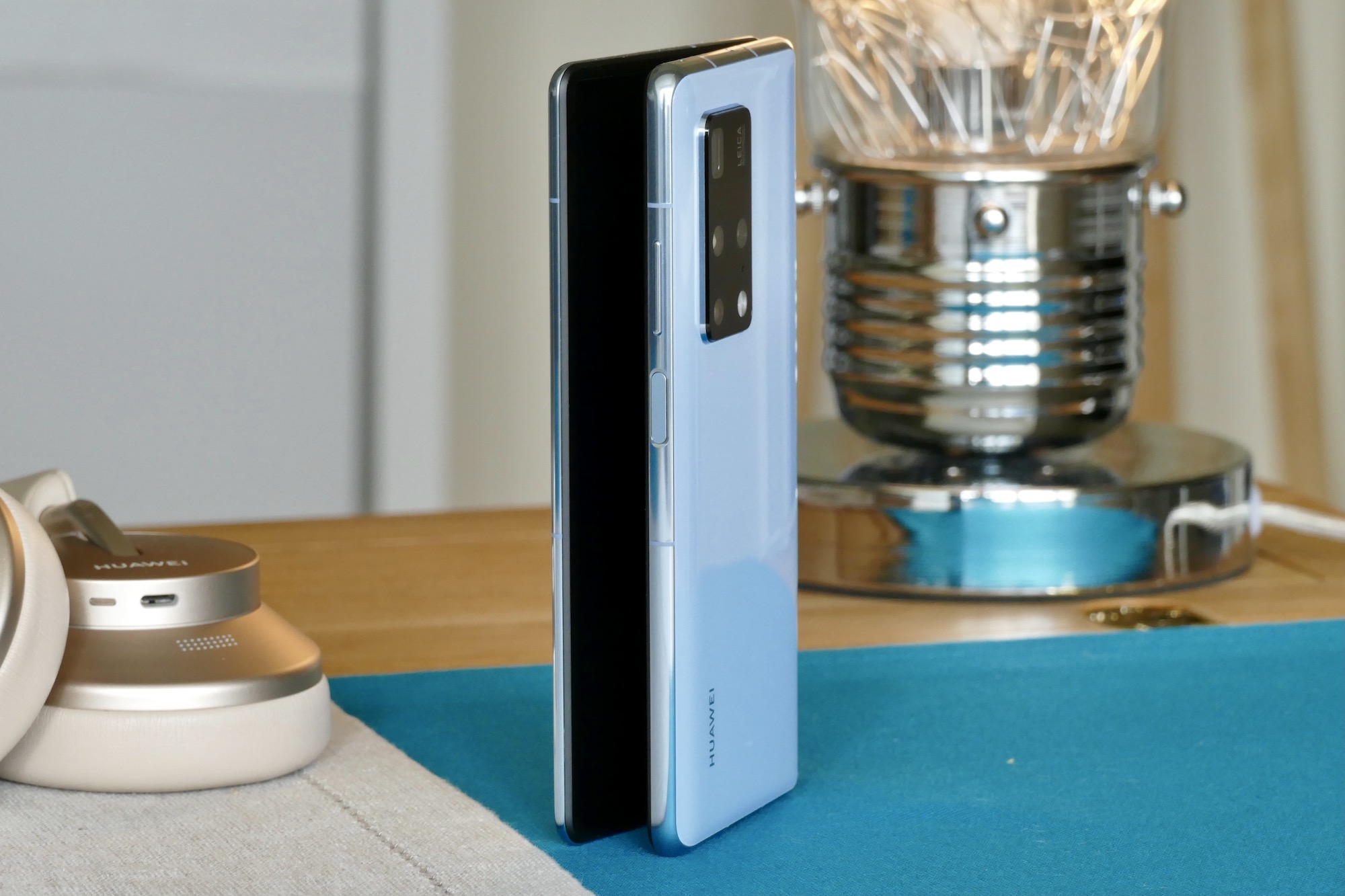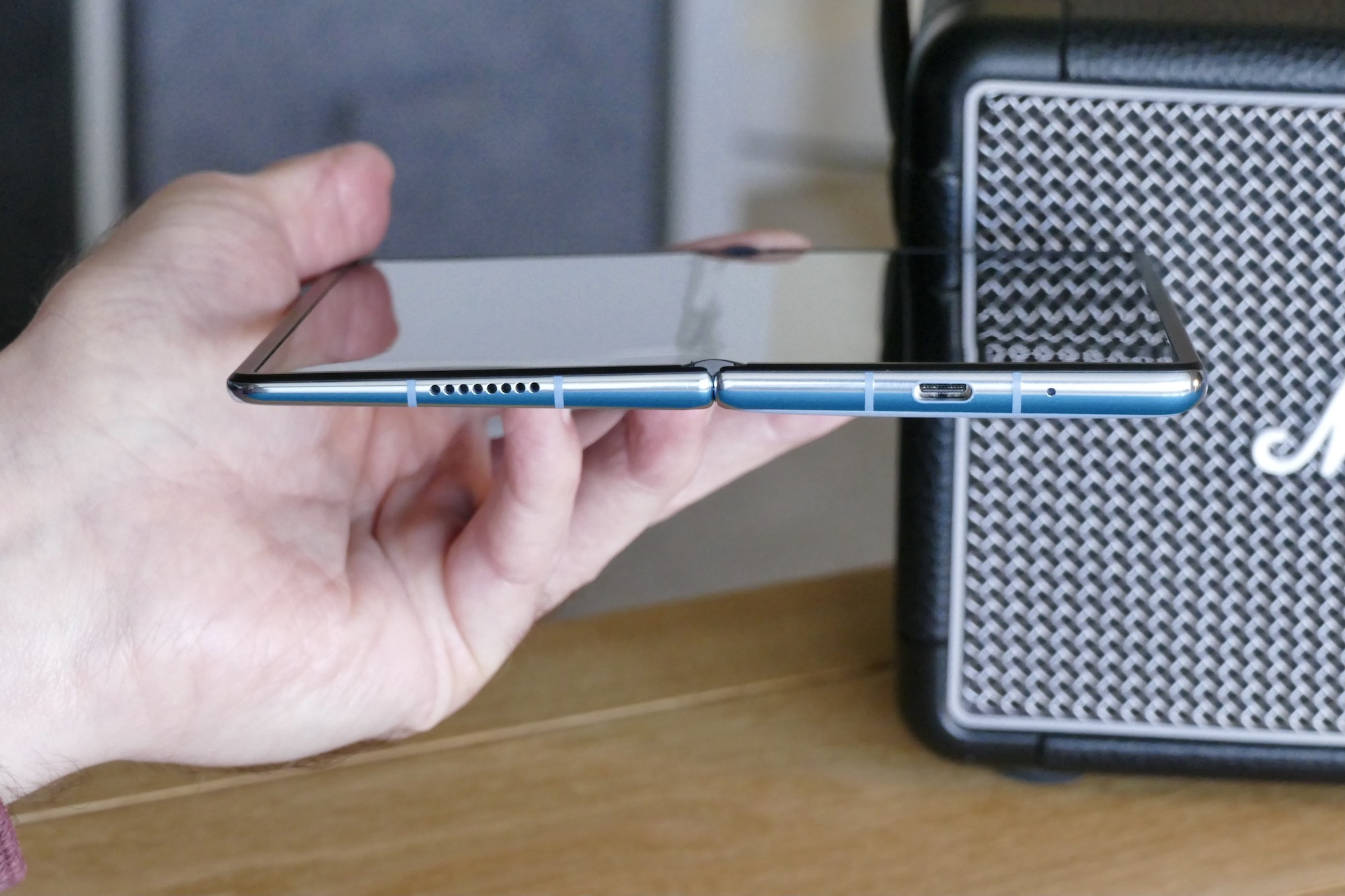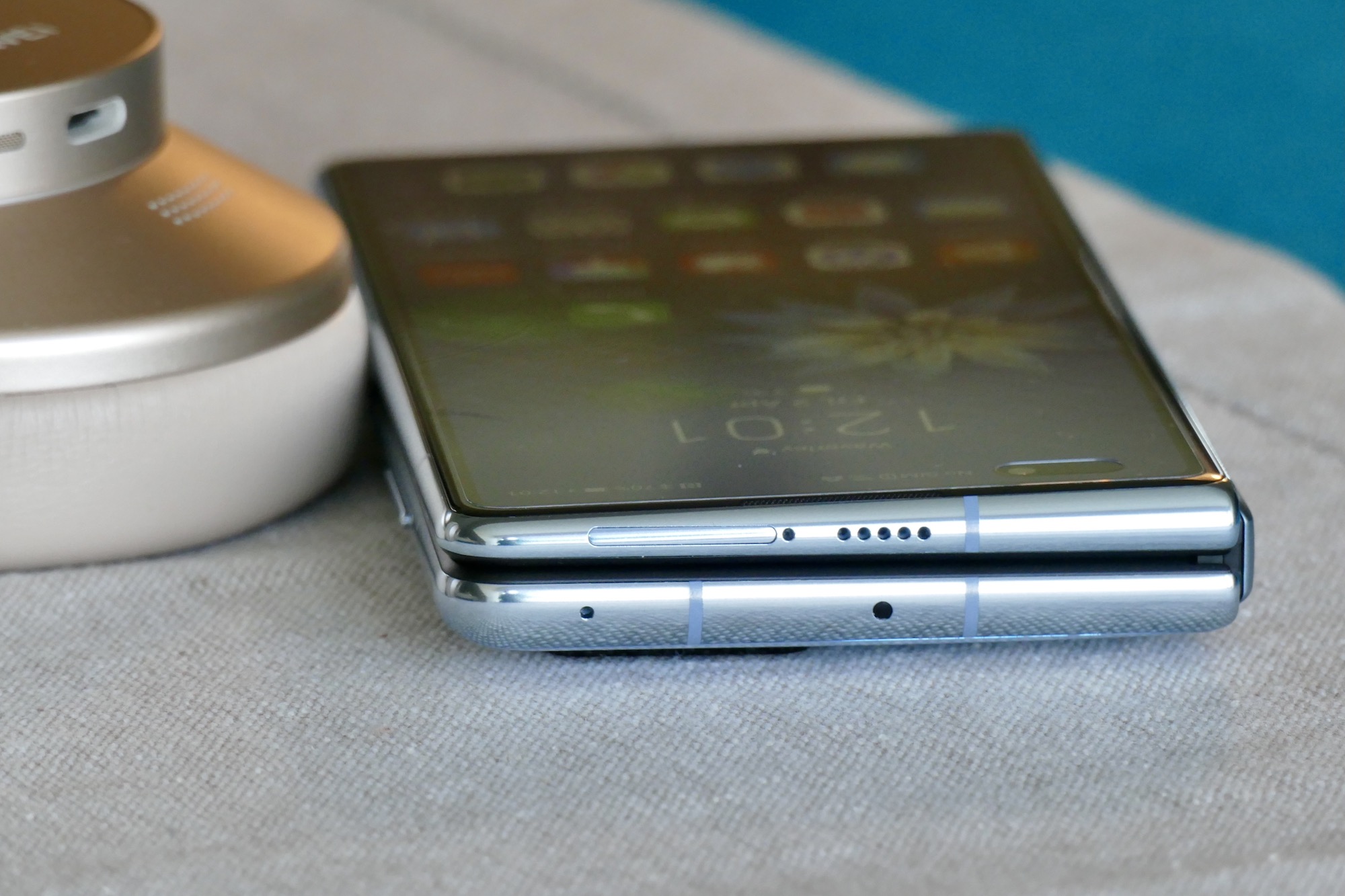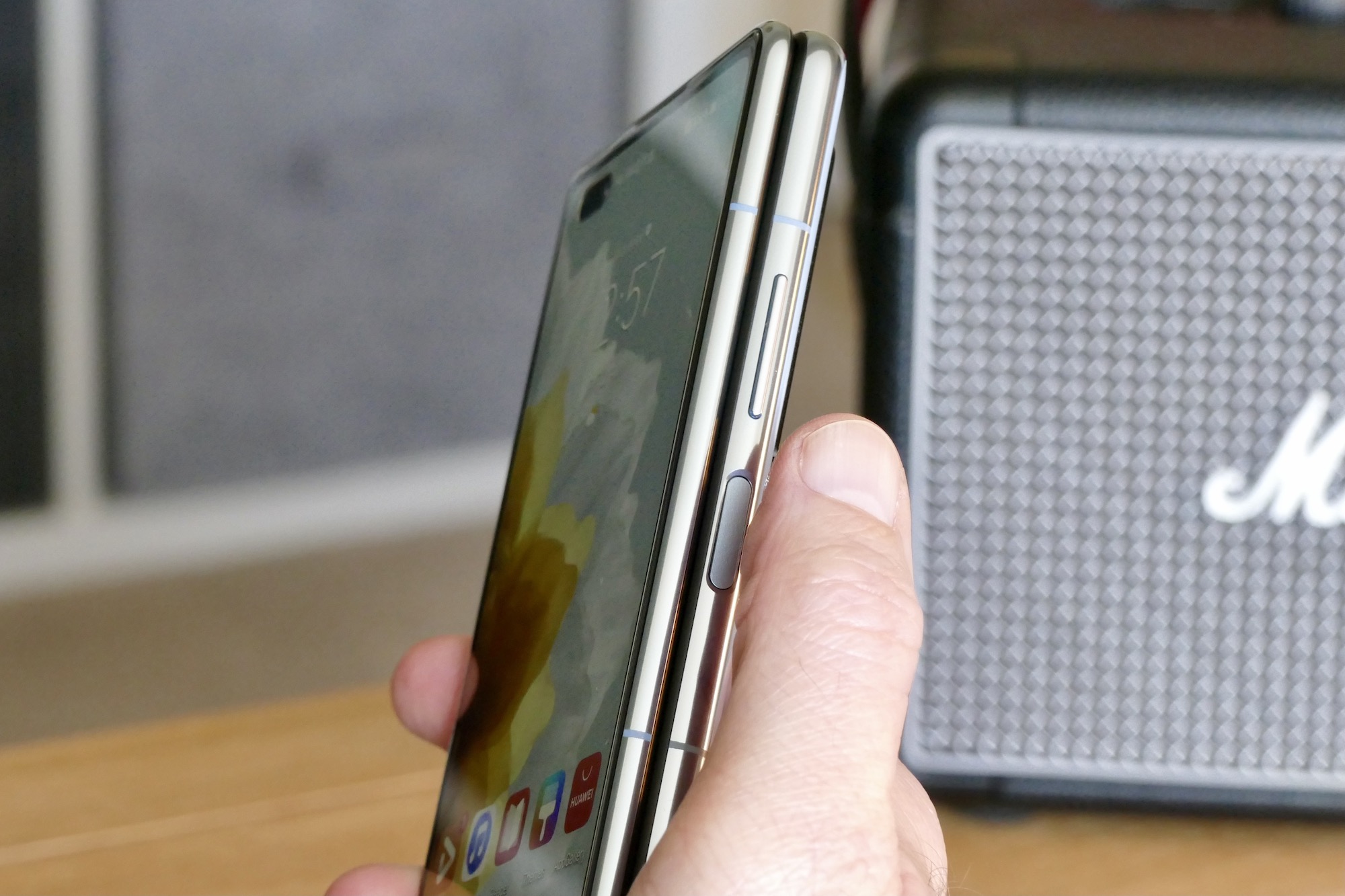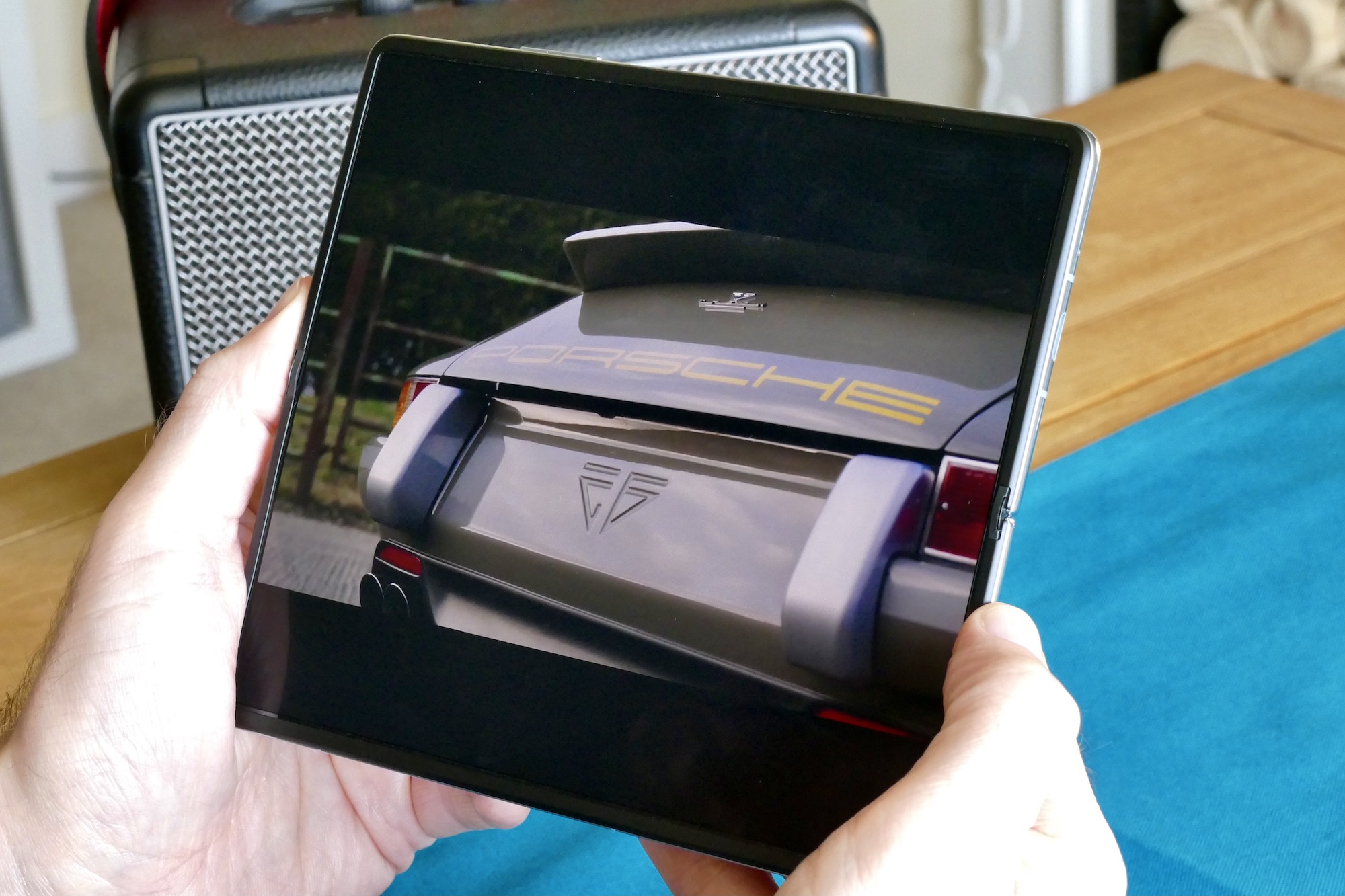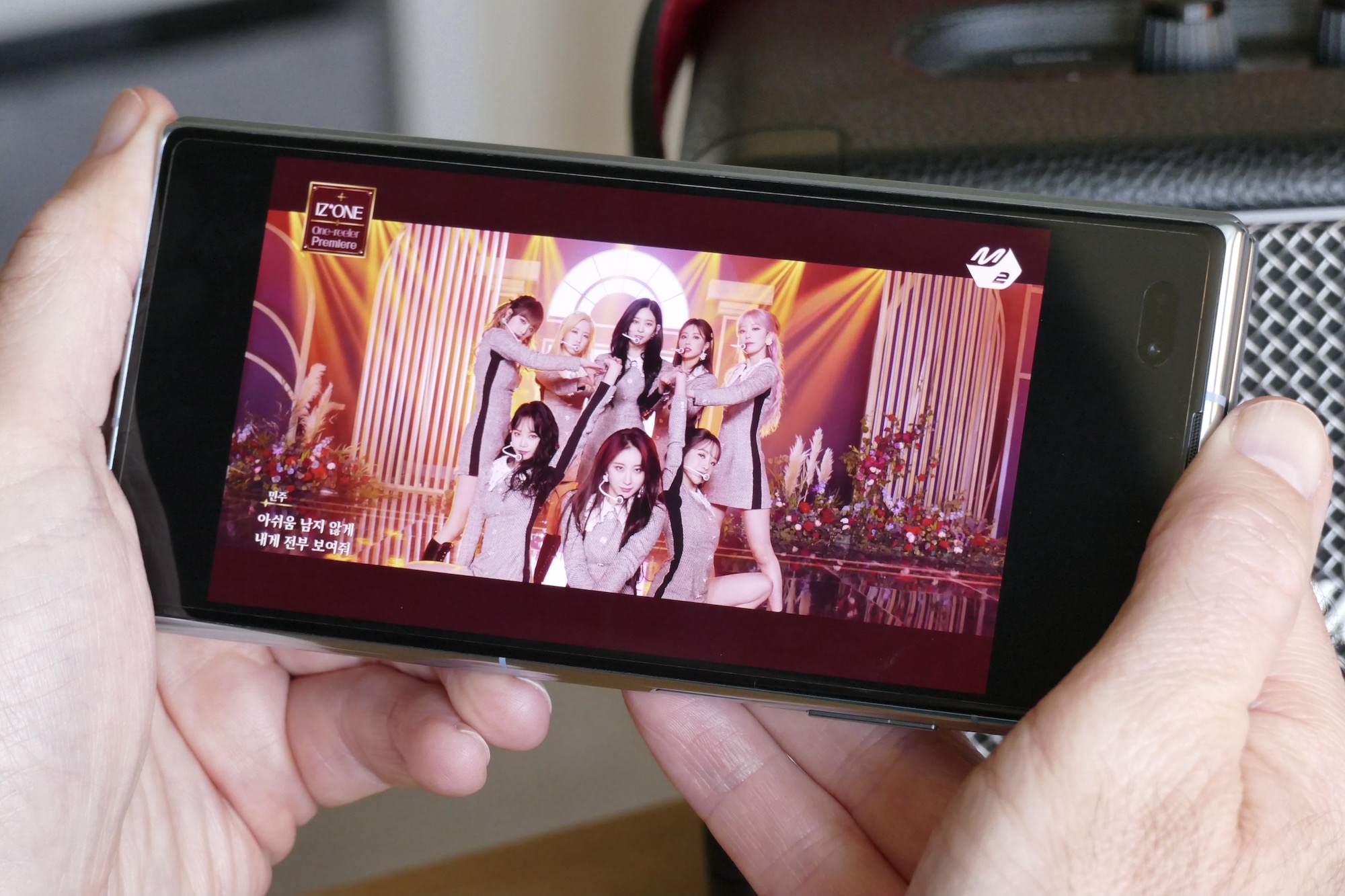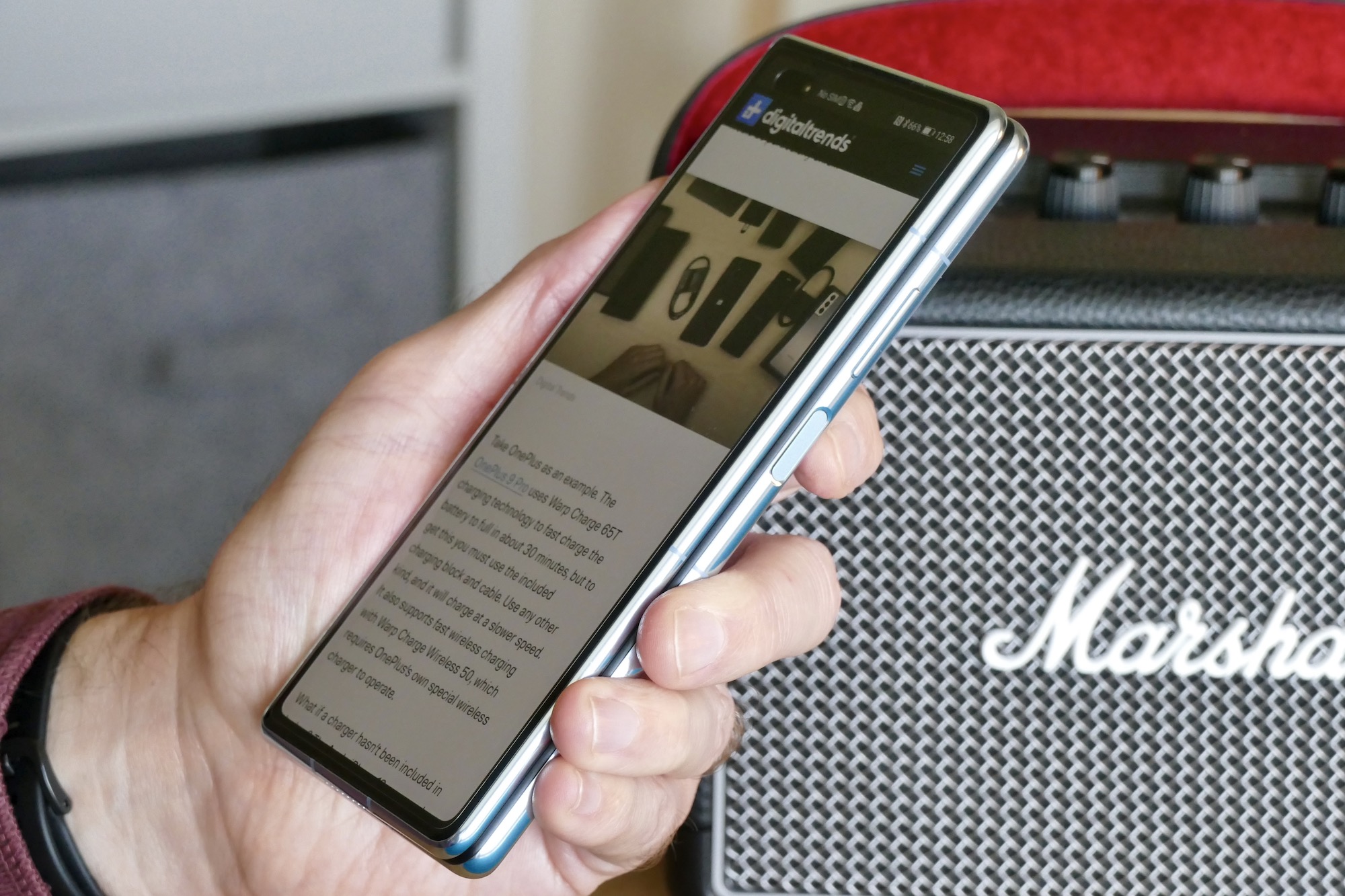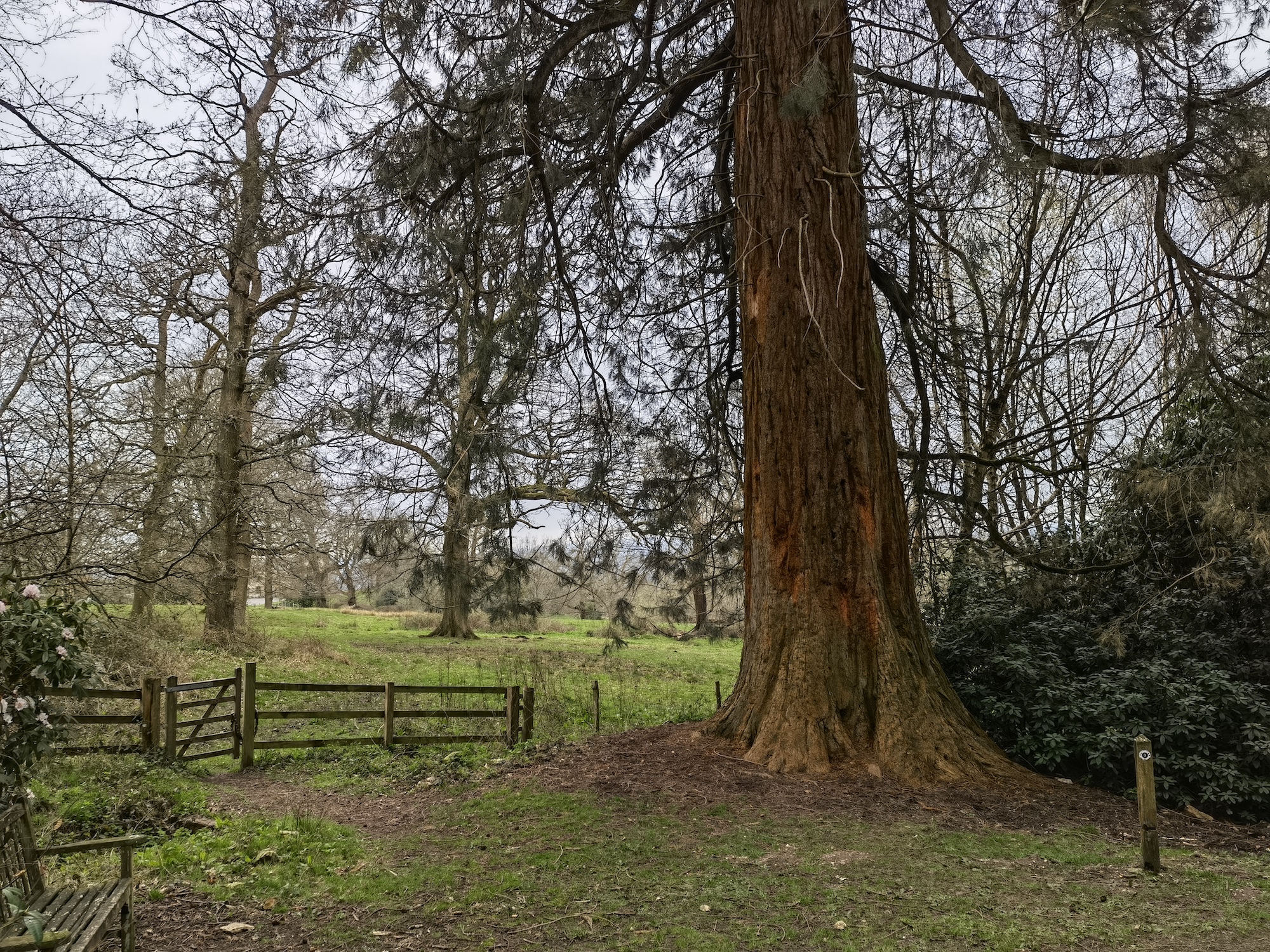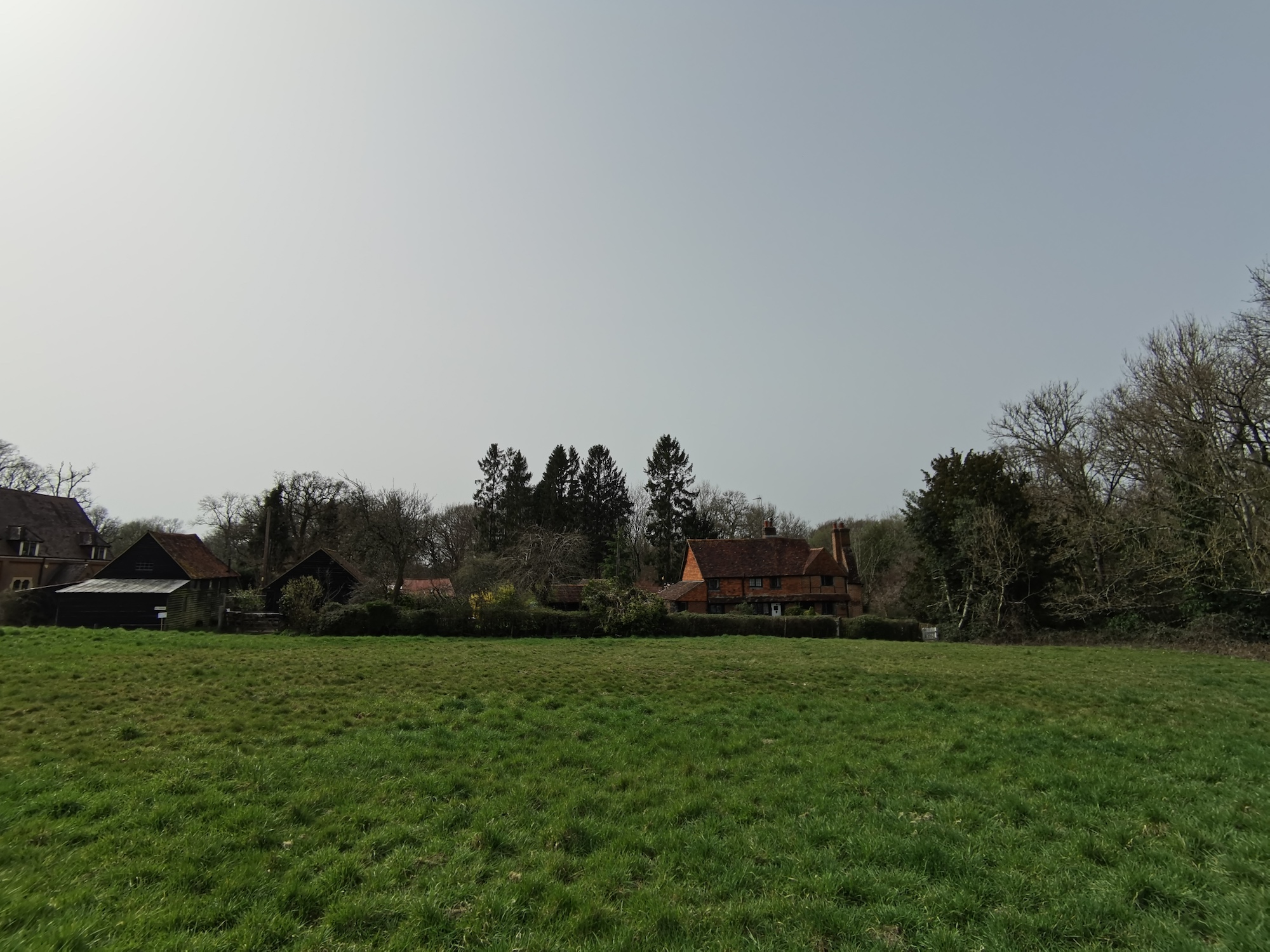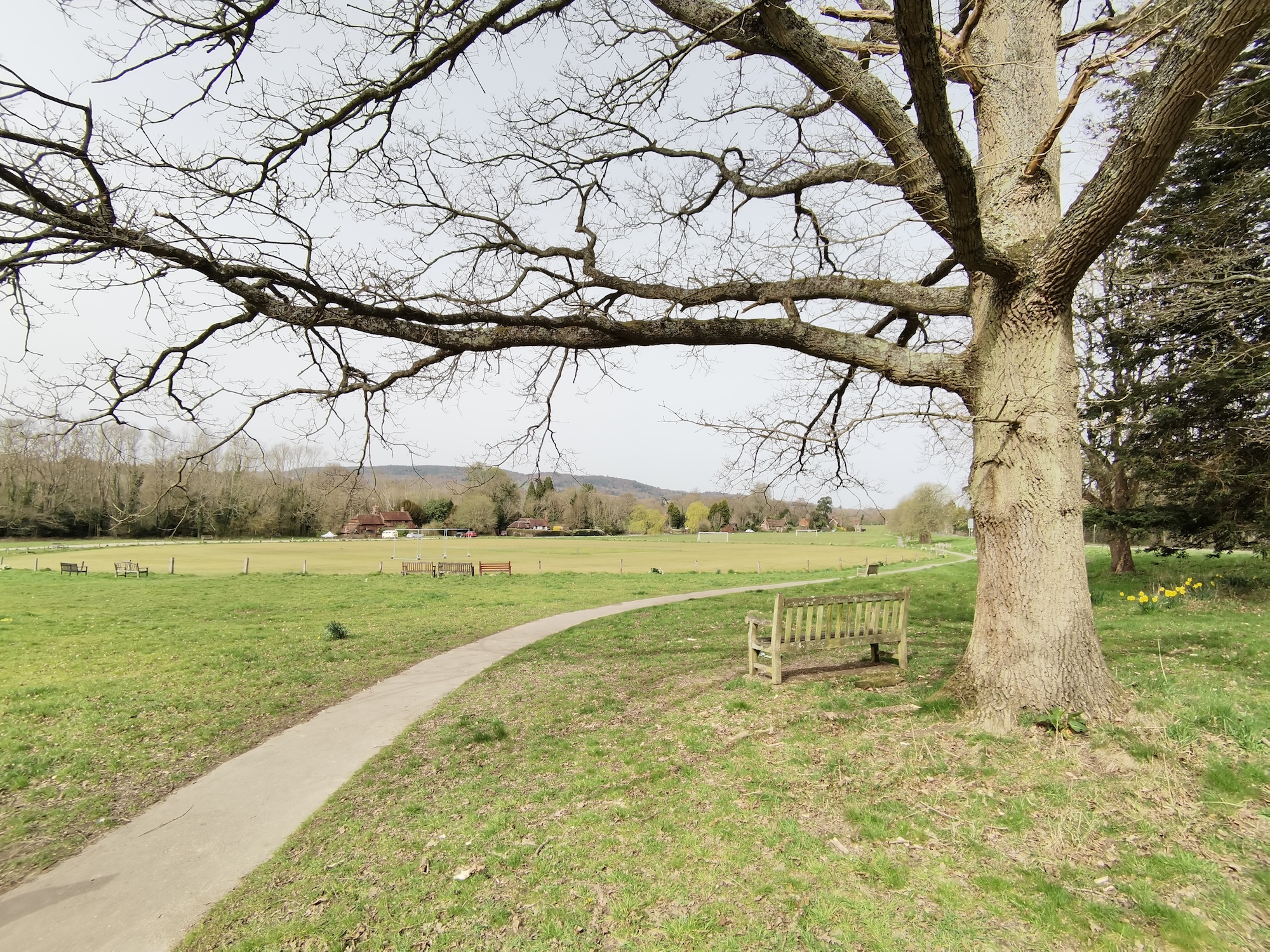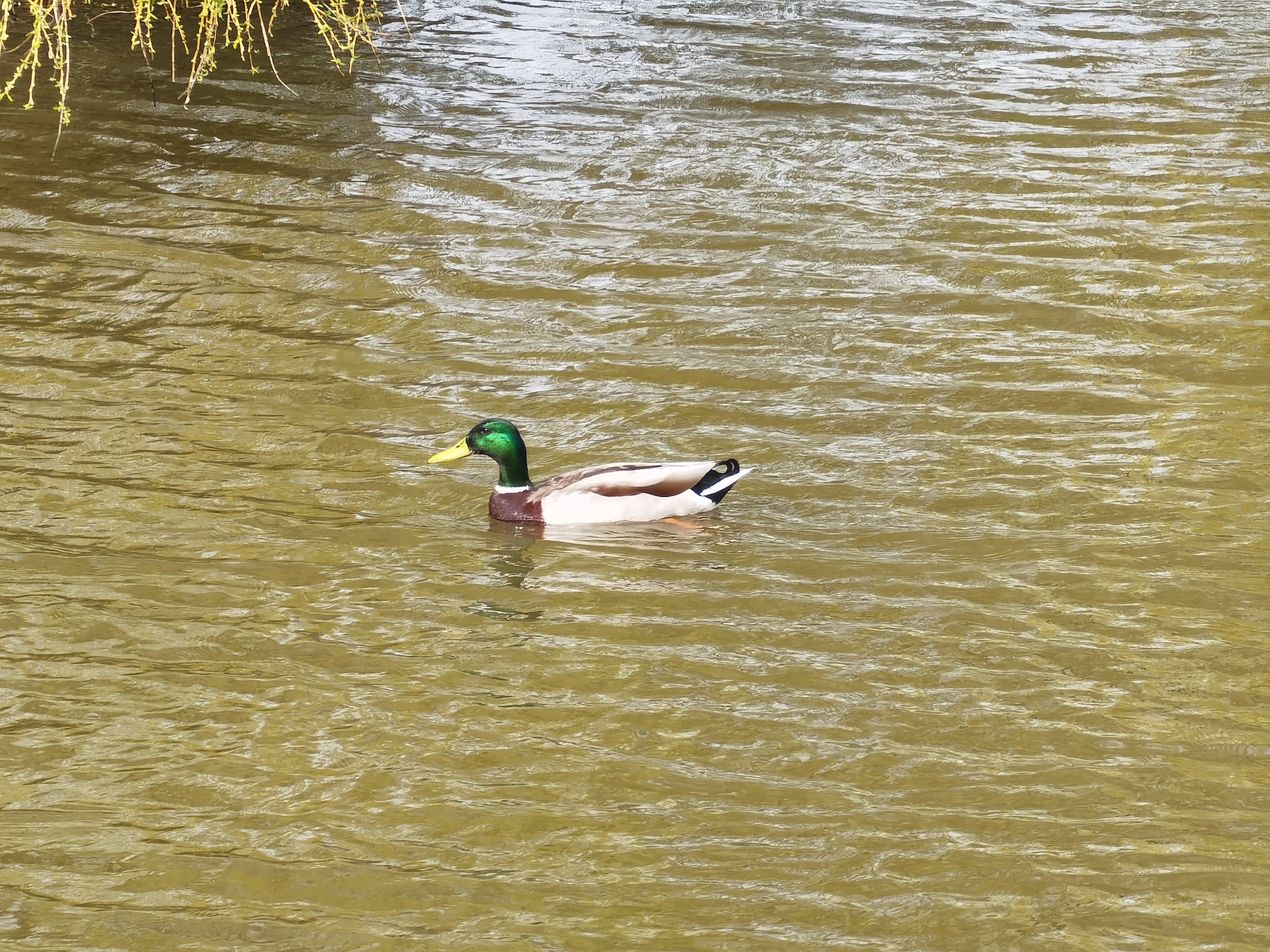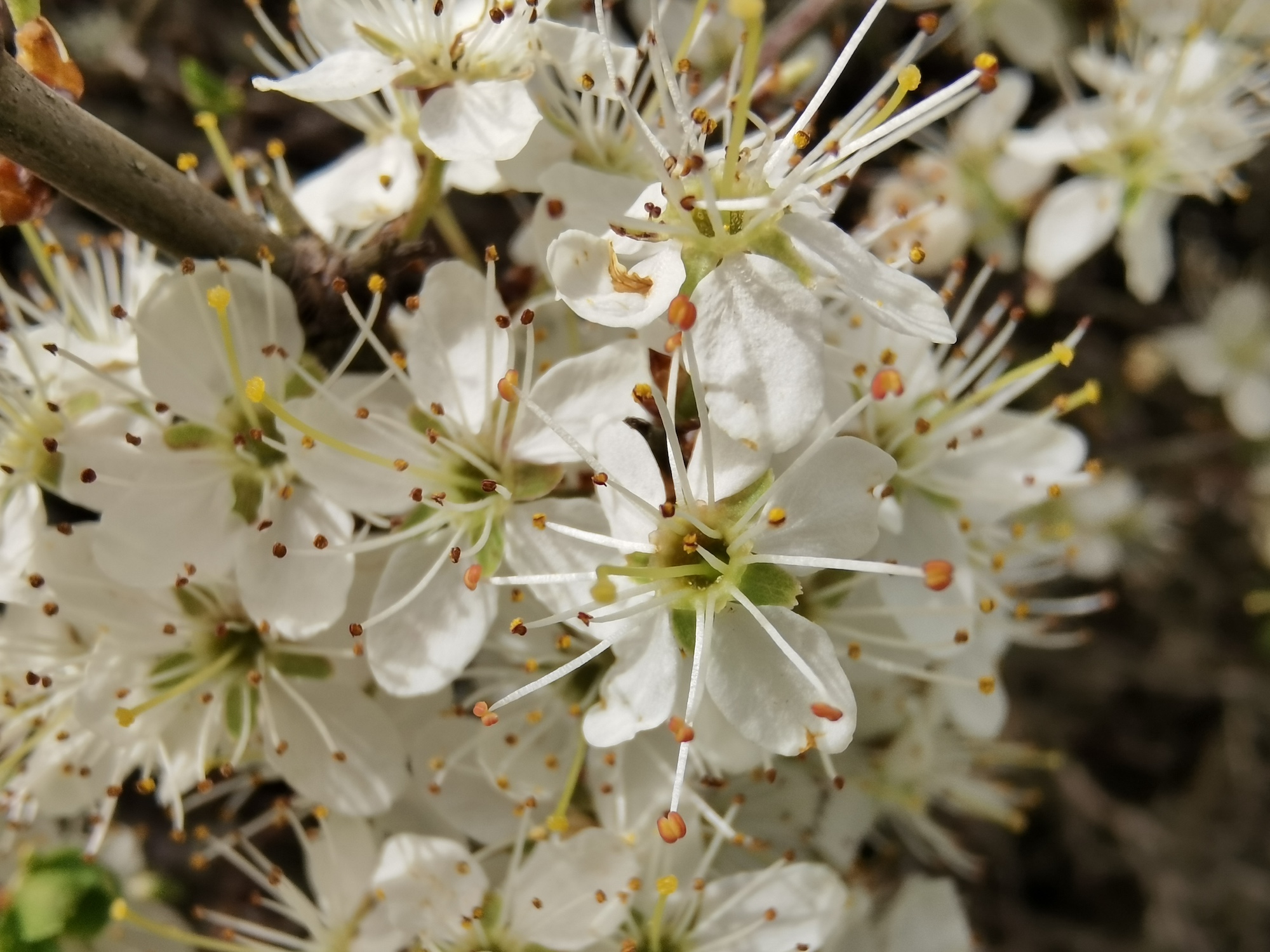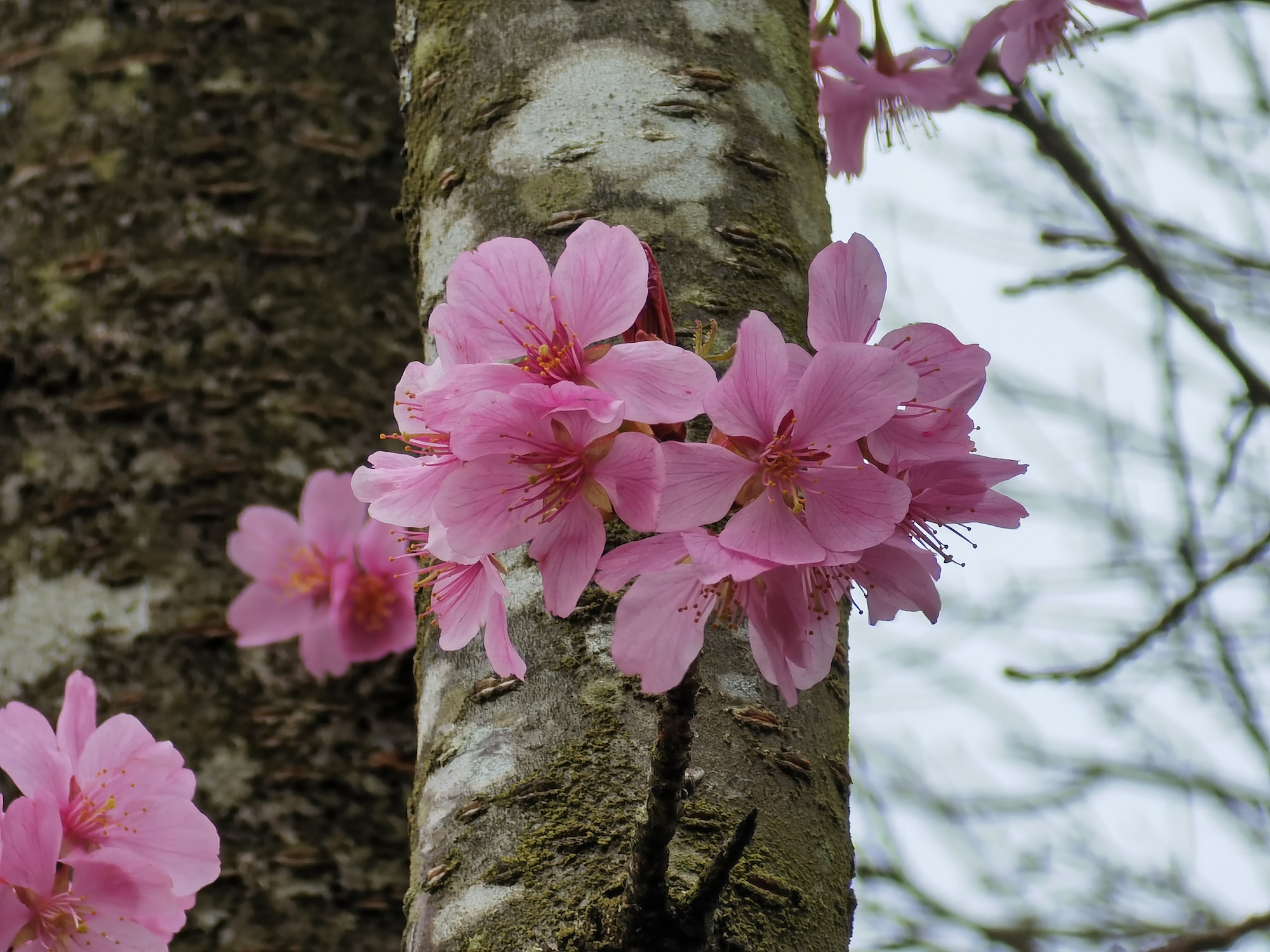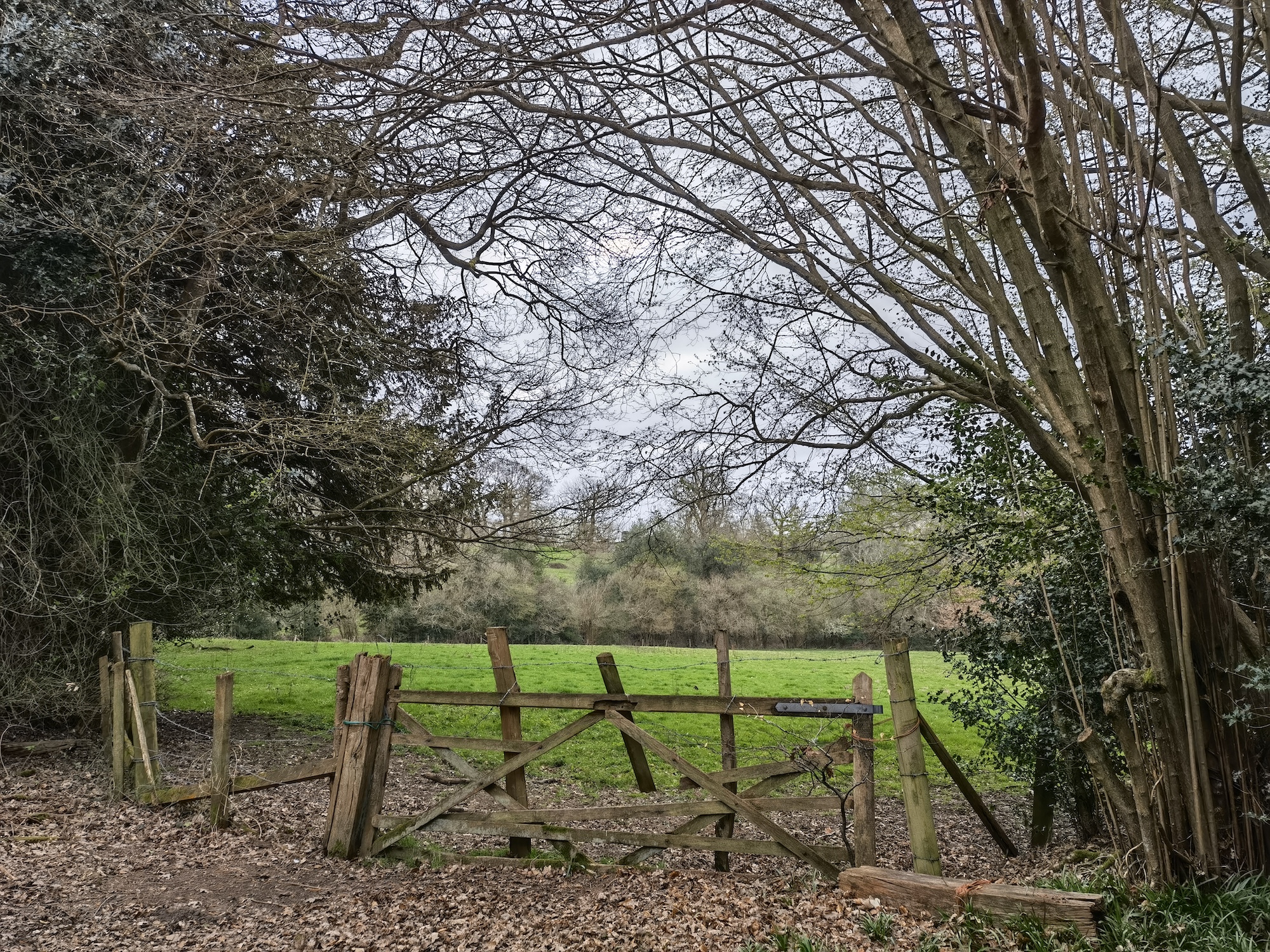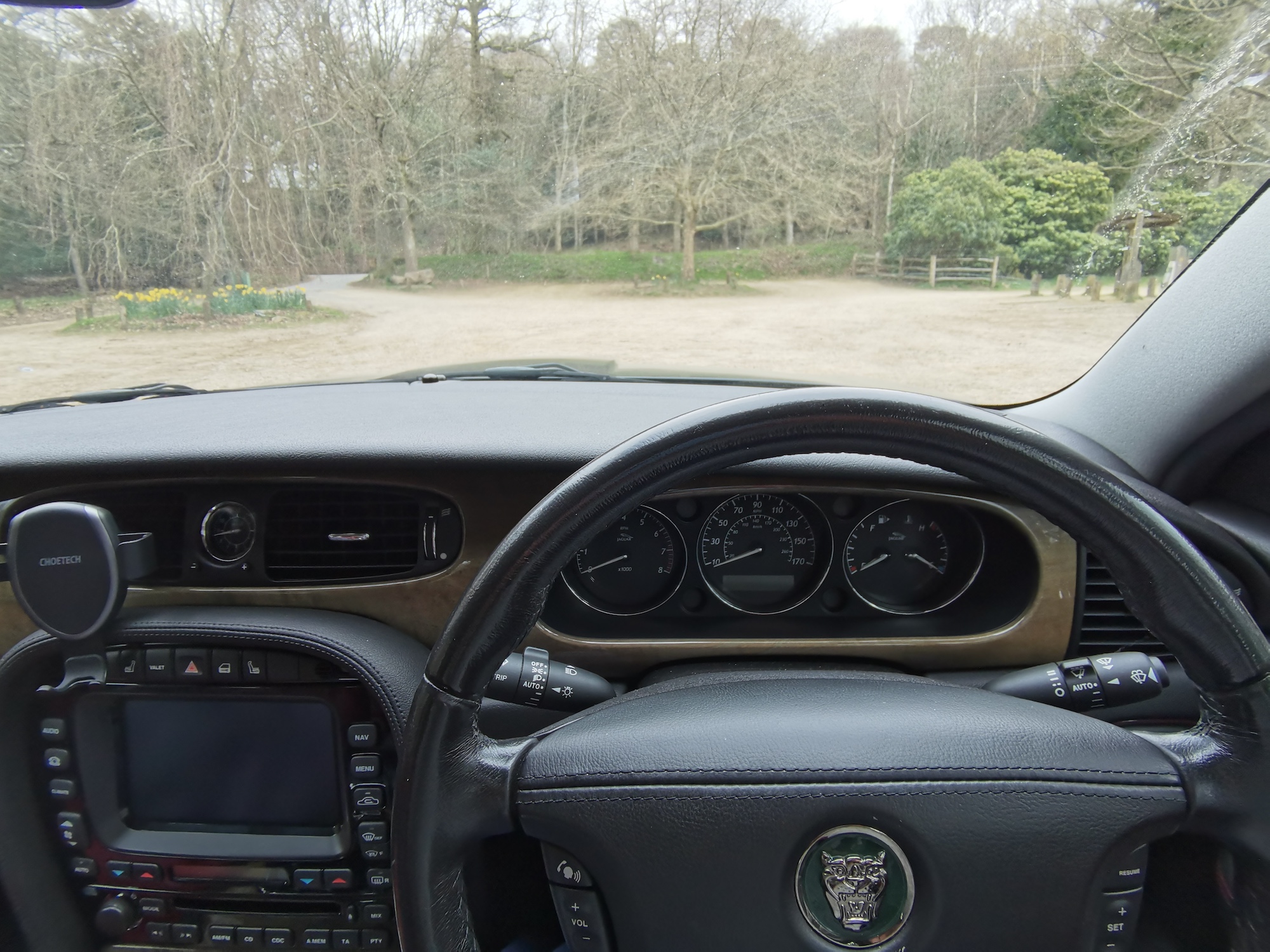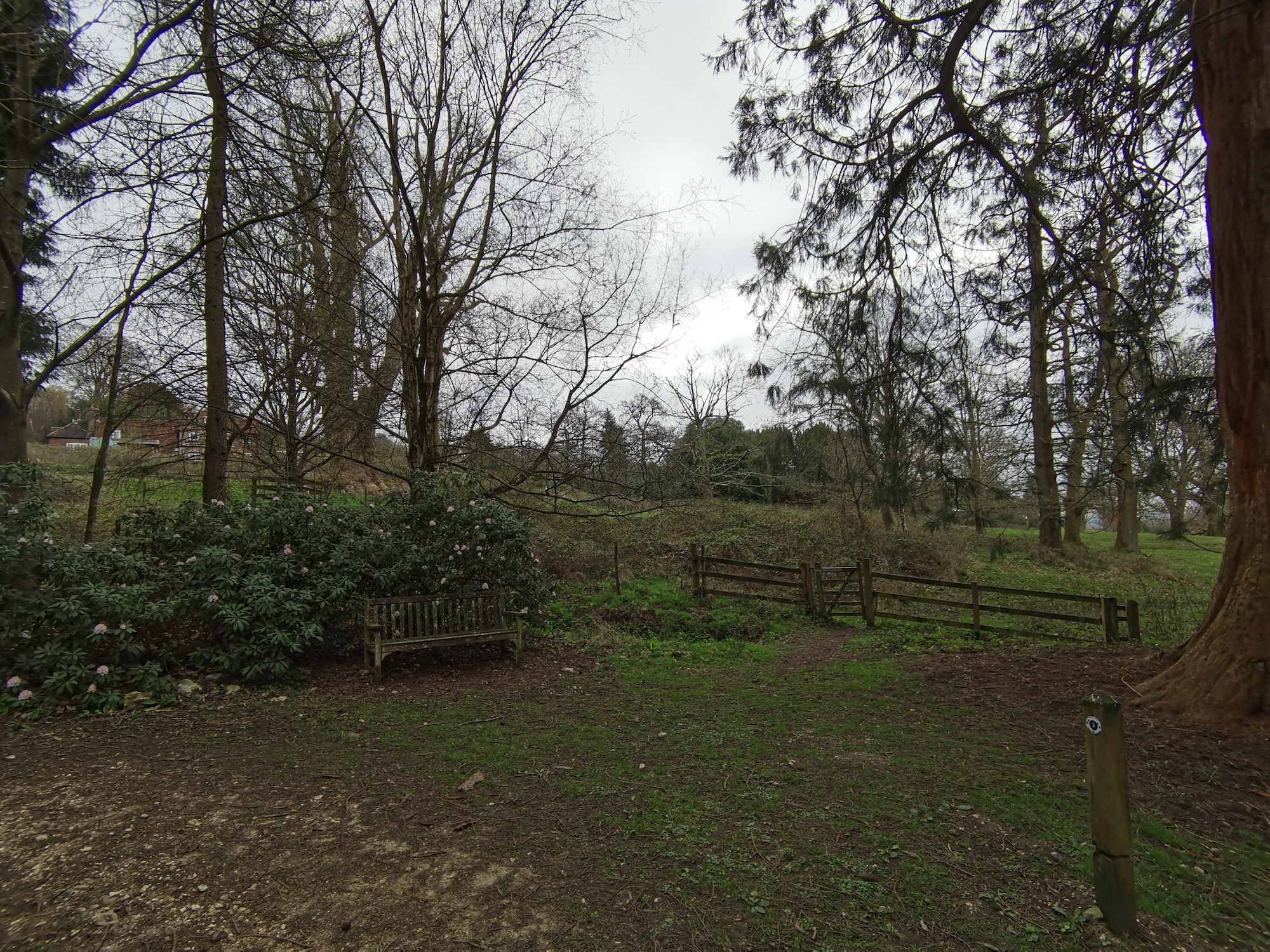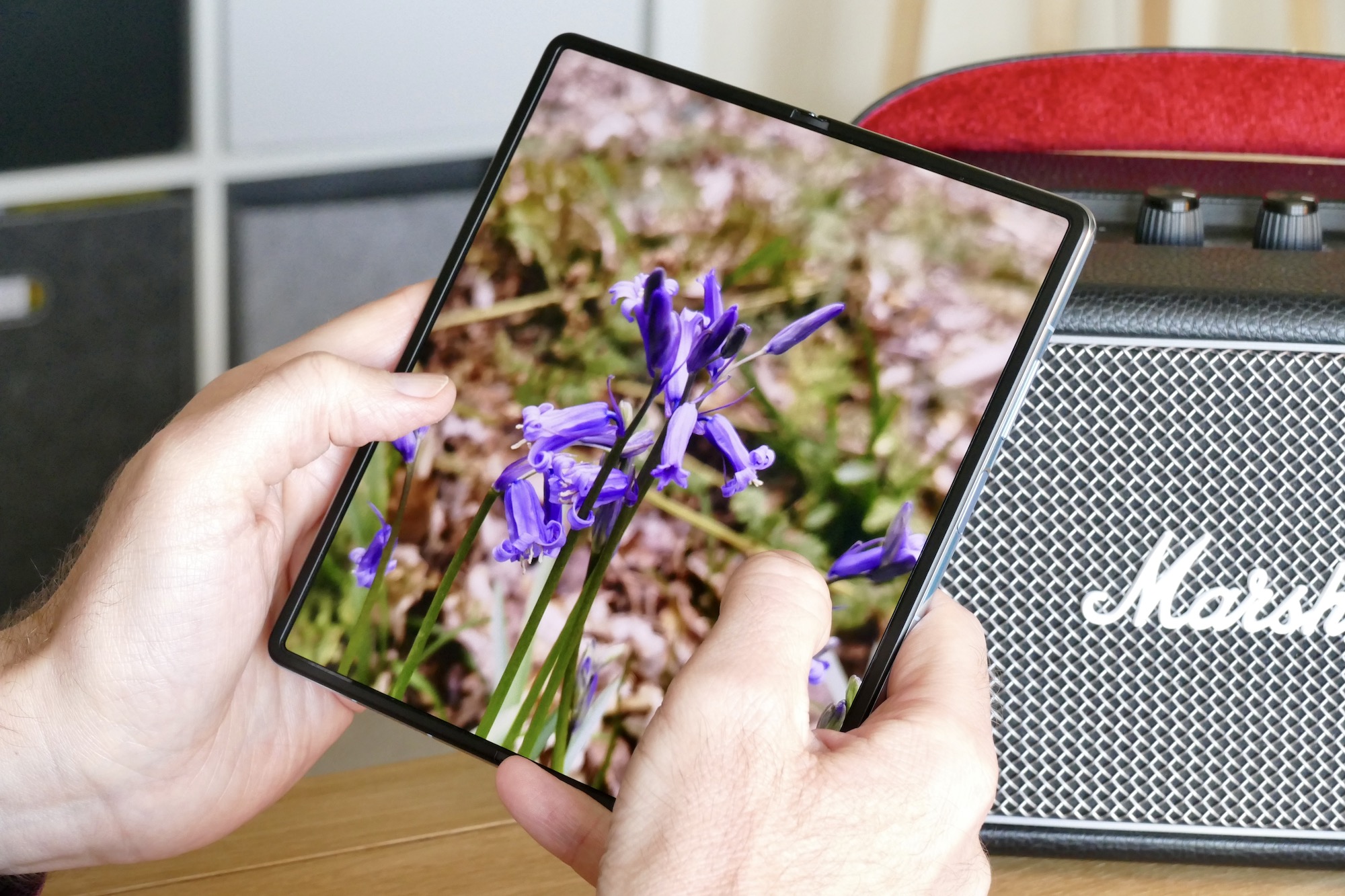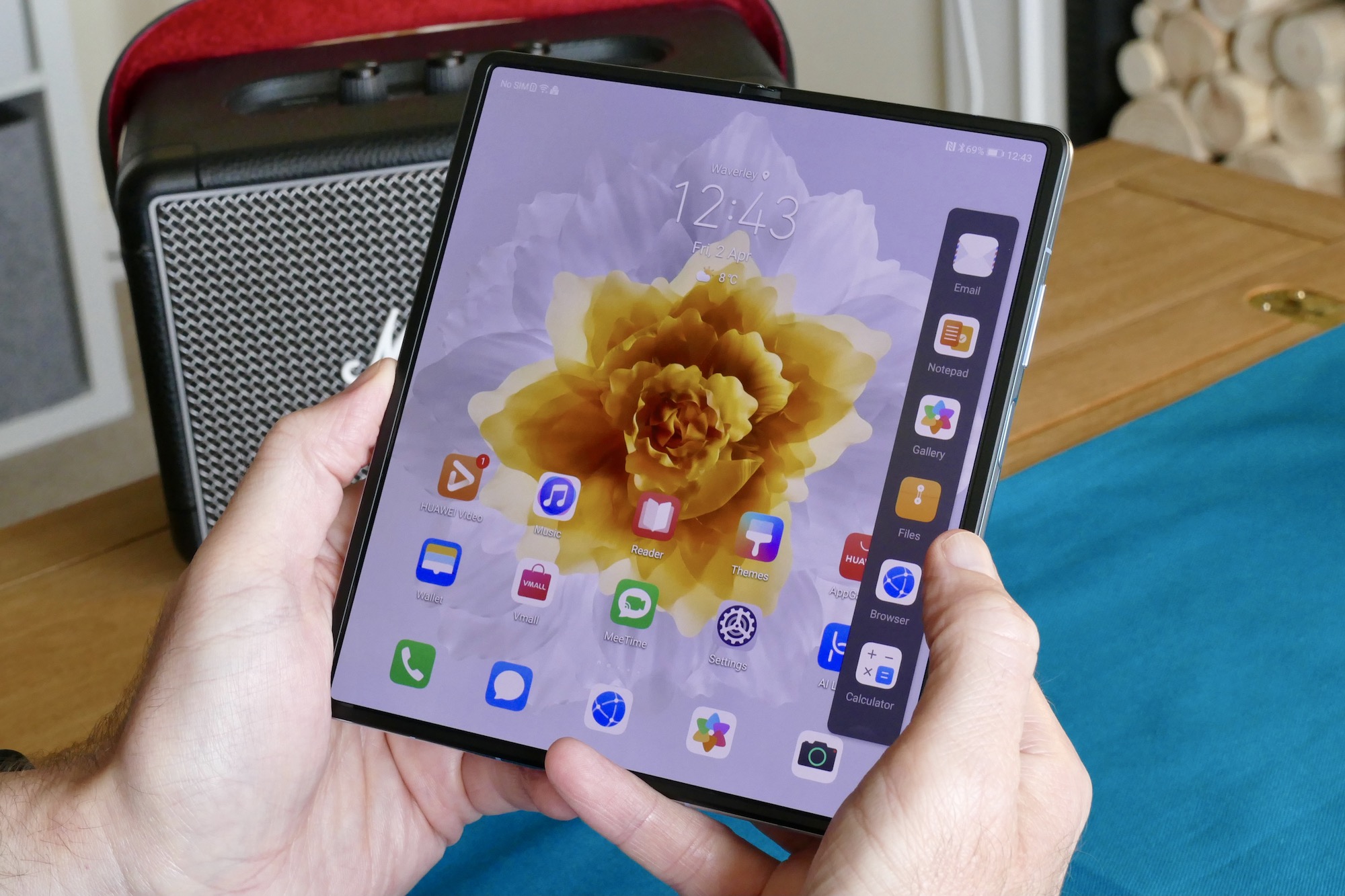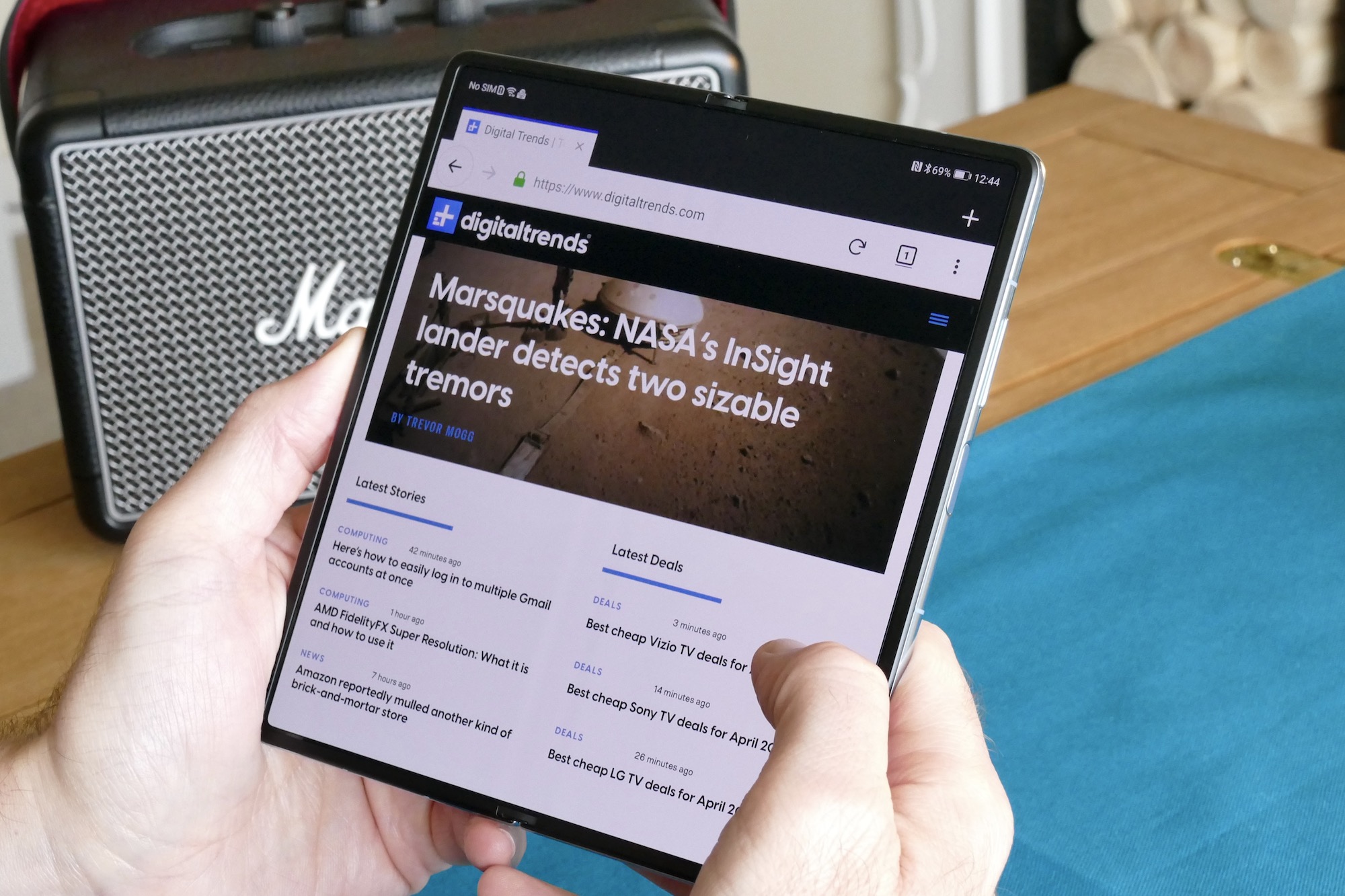By ditching the “folding back on itself” design for the new Mate X2 folding smartphone, and adopting the same “open book” style as the Samsung Galaxy Z Fold 2, Huawei has schooled every other company on how to make an utterly fabulous folding phone. It’s genuinely one of the most breathtaking phones I’ve held — the definition of high class, worth-every-penny supertech that has more in common with a luxury vehicle than it does a normal smartphone.
Except while the hardware is leaps and bounds ahead of the already delectable Mate XS, the camera — a traditional Huawei high point — hasn’t kept pace, and is a surprising misstep. I’ve been using the Mate X2 for just under a week, which isn’t enough time for a full review, but more than enough to understand where the latest Huawei folding smartphones strengths lie, and where its weaknesses hide.
Open and closed
The Mate X and Mate XS’s unfolded screen folded back in itself to become the front and back of the closed phone, effectively giving the device three screens. The Mate X2 has two separate screens, just like the Galaxy Z Fold 2. Unfolded it’s an 8-inch, 90Hz, 2480 x 2200 pixel OLED, while on the closed front of the phone you look at a 6.45-inch, 90Hz OLED screen with a 2700 x 1160 resolution.
This neatly removes problems with touch sensitivity and the odd “springiness” of the old design where the screen curled around the side of the phone, plus the central crease in the center of the unfolded screen is much less noticeable too. It feels harder wearing, and I noticed fewer reflections. The plastic border is a few millimeters thick, and gives you somewhere to hold the phone, while closed up the bezel is minimal and unobtrusive.
Huawei has used an unusual but highly successful wedge design for the body, so when it’s closed the phone is completely flat without any noticeable gap between the two halves. It looks fantastic, and like a normal (just very thick) phone, unlike the closed wedge shape of the Z Fold 2. Like the Samsung phone, the hinge allows for an almost complete range of motion, so it stays where you put it throughout almost all its 180-degree movement.
This is where the comparison to a luxury car comes in. Closing the phone ends when the hinge completes the motion for you, and it does so with a heavily dampened action and a pleasing magnetic “bmmf” sound, just like soft-close on a Mercedes Benz car door. Opening it back up requires more effort than you first expect, and there is a knack to doing it. I still can’t open or close it with one hand though.
It’s not really a one-handed phone at all. Closed it’s both thick and wide, and open it’s obviously too large to use with one hand, although holding it to watch video is no issue. The 295-gram weight has been spread around very effectively, so it never feels unbalanced when closed, or awkward when it’s open. It’s all so incredibly well made, and a real occasion when you take it out of your pocket and open it to reveal the full screen. Folding phones may not be that new anymore, but that doesn’t stop the Mate X2 from being a show-stopper.
Disappointments? If pushed, I’ll say the smooth, flat, steel outer edge of the dual-spiral hinge is a bit dull to look at. Samsung made good use of this space by adding some sparkly branding to it, which gave the phone more identity. But that’s it. Huawei has made excellent hardware for a while, really taking time to get the colors and in-hand feel exactly right. As a piece of design and engineering, the Mate X2 is its most accomplished, highest quality smartphone yet.
The viewing experience
You know there is a “but” coming, but I’m not there just yet. One of the frustrating things about the Mate XS was the poor audio experience, and I’m pleased to say it has been much improved on the Mate X2. There are dual stereo speakers which operate both open and closed, and they have masses of volume, a decent level of bass, and almost no noticeable distortion. Hold the phone open and in landscape and the speakers aren’t covered by your hands, and it adds a pleasingly wide sound stage. It’s exactly what you want from a phone that’s made for watching videos.
I used Firefox to access YouTube, and 2160p videos look superb, vibrant, and full of color, while staying extremely sharp too. Close the phone during a video and it automatically switches to the outer screen without interruption, something I wasn’t expecting to happen outside of a native app. I carried on watching a lot on the Mate X2 — it’s the audio/visual experience I wanted from the Mate XS but didn’t quite get.
What about the crease? It’s less of a noticeable bump than the Mate XS, and like the Galaxy Fold series, it’s easy to spot when the screen is off and being viewed at an angle. With the screen lit and viewed head-on, like you would when normally using it, you can’t see it. More importantly, you can’t feel it so much. The Mate XS’s screen had a distinct feel to it, but the Mate X2’s crease is barely there at all when swiping across the screen. It’s yet another example of the Mate X2’s polished build quality.
Here’s the ‘but,’ and it’s a shock

The Mate X2’s hardware is Huawei at the top of its game, but other aspects of the phone have struggled to keep up. Most will know the software will end up being discussed soon, but the real surprise is the camera, but not in a good way. The specification is decent — a 50-megapixel f/1.9 aperture main camera with optical image stabilization and laser autofocus, along with a 12MP 3x optical telephoto, an 8MP 10x optical telephoto, and a 16MP ultra-wide — but it just doesn’t perform like it should.
I had trouble with focusing, where it would often refuse to focus on subjects using the 10x optical zoom or oddly not focusing at all using the ultra-wide camera, noticeable inconsistency between the main and ultra-wide camera, drab colors in some situations, and problems with over- and under-exposure. I simply used the camera as normal, so these issues were down to the camera, rather than me messing around in Pro mode.
I’ve included more samples than usual below to illustrate the issue. These were all taken over several days, and show the varied results, with photos ranging from the poor to the decent, but none that are outstanding. I’ve used Huawei cameras for years, and outstanding photos have become almost a given, which is perhaps why I’m being more harsh than usual with my judgment here.
You may also notice there is no camera set inside the open screen. You can take selfies and make video calls with the phone closed, as there is a camera inside a hole-punch cutout, or by holding the phone backwards you can use the main camera and the outer screen together to take selfies.
The Mate X2’s camera is not as good as the P40 Pro Plus, a phone launched last year, and not even close to Huawei’s best camera phone, the P30 Pro. There are some software frustrations too, such as the wobbly viewfinder stabilization at 10x zoom, which is very noticeable after using the rock-solid 10x zoom mode on the Galaxy S21 Ultra, There were a few good points, with the large sensor returning some lovely natural bokeh for example, but for what should be a flagship camera, it sadly underwhelmed.
All this is exacerbated by how the competition has caught up with Huawei over the past year. The Galaxy S21 Ultra, the iPhone 12 Pro, and even the OnePlus 9 Pro are superb camera phones, meaning Huawei has to work harder than ever to shine, but the Mate X2 here can’t quite keep pace.
You know the situation with the software. If you rely on Google services, then a Huawei phone isn’t for you. However, if you’re not reliant on Google, Huawei’s EMUI is highly usable. It’s Android 10 underneath EMUI 11, and it all works speedily, looks pretty, and has considerable functionality — most notably the excellent split-screen multitasking on the Mate X2. No, the App Gallery won’t have all the apps you may want, but there are ways around this, and by using the Firefox browser I could import everything from Chrome, making the switch less jarring.
However, it’s still the same software we’ve seen on the Mate 40 and really, the P40 series too. Huawei will point to its recent additions to the software, like the MeeTime video call service, Petal Search, and AppGallery improvements as evidence to the contrary, but these didn’t affect my day-to-day use of the Mate X2. MeeTime doesn’t work in the U.K., I can’t download Genshin Impact from the AppGallery, and Petal Search has intrusive ads and a list of entirely irrelevant news stories. I understand Huawei needs these additional services to build out its own ecosystem, and some recommendations may improve if I used the phone for longer, but they don’t welcome me in yet, no matter how smooth and feature-packed EMUI 11 is.
Only for the loaded
Every time I picked up the Mate X2 and watched a video, I was staggered by how much it has improved over the Mate XS, and how incredibly solid and superbly made it is. I can just about live with the AppGallery’s shortcomings — if I was to use the phone every day, I’d have to — but for the camera to leave me nonplussed was something of a shock. If the camera was on the same level as the P40 or Mate 40, the Mate X2 would be an absolute winner, and I’d be waving it a teary goodbye. Instead, I’ll return to the P30 Pro and just live with the fact it doesn’t fold.
How about the Huawei Mate X2 is availability and price? It has so far only launched in China, where it starts at the local equivalent of $2,740. Considering the Galaxy Z Fold 2 can now be purchased for $1,000 less than this, it’s a no-contest, even if you were willing to go down the import route to get one. There has not been a launch announcement for Europe or the U.K. yet, but it may come later.
Huawei has mysteriously dropped the ball with the camera on the Mate X2, and the concept of a high-end Huawei phone without a class-leading camera is entirely new to me, and one I’m hoping won’t be repeated with the rumored P50 series. It’s even more upsetting here because the rest of the hardware is really outstanding.
